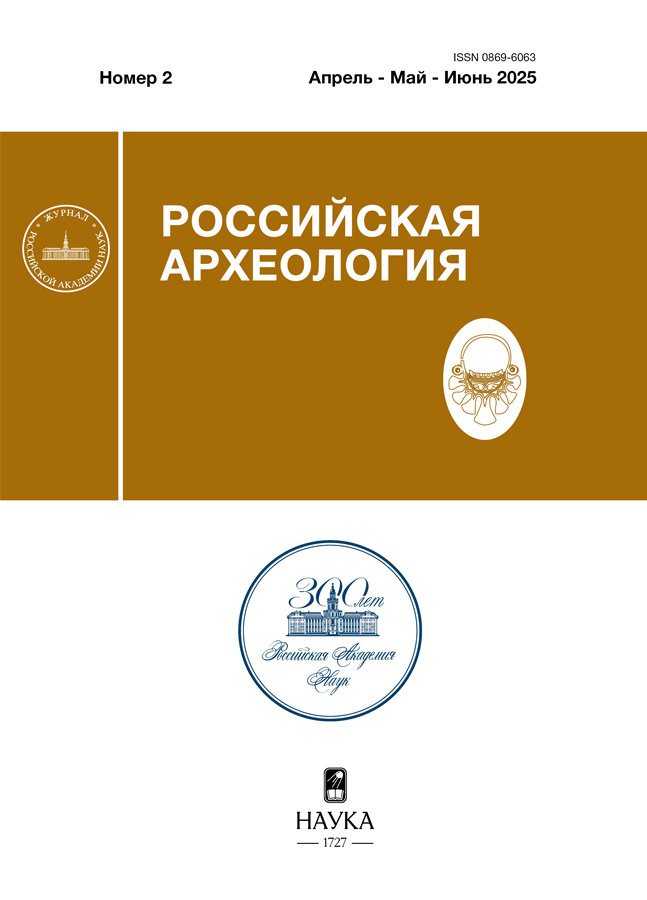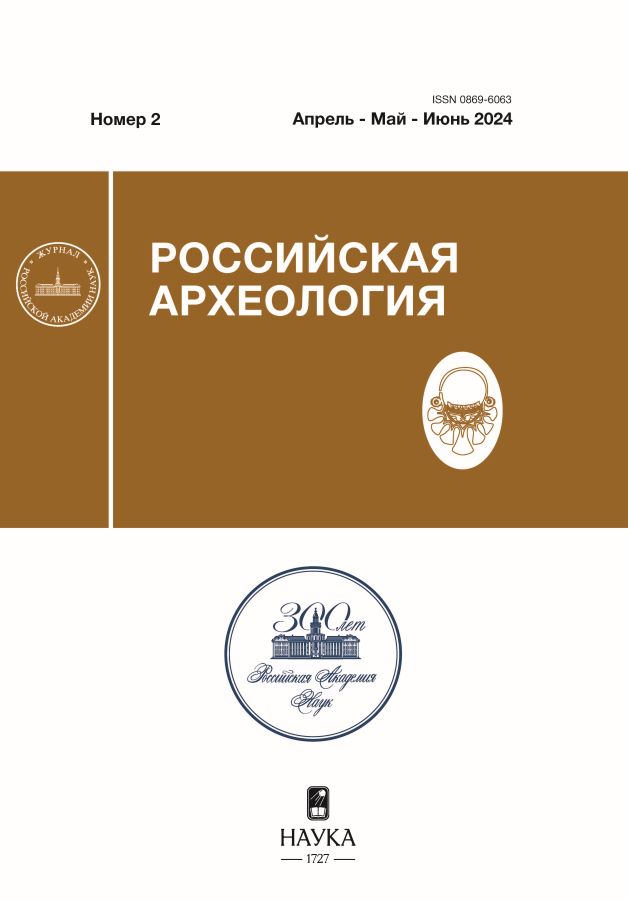New data about the stability of skills for creating clay vessel shapes
- Authors: Sukhanov E.V.1
-
Affiliations:
- Institute of Archaeology RAS
- Issue: No 2 (2024)
- Pages: 175-191
- Section: ARTICLES
- URL: https://freezetech.ru/0869-6063/article/view/655778
- DOI: https://doi.org/10.31857/S0869606324020129
- EDN: https://elibrary.ru/WNVZBK
- ID: 655778
Cite item
Abstract
The article analyzes the relative stability of skills for creating the shapes of clay vessels, both wheel-made and hand-made ones. Sources of the study included a series of “identical” vessels that were made as part of experiments conducted by employees of the Joint Team for Pottery Study in the 1970s and the Samara Expedition for the experimental study of ancient pottery in 2019–2022. Shape parameters have been identified that exhibit the greatest stability, regardless of the method of making the vessel, the type of building elements and the skill level of a craftsman. These parameters are the inclination angles of the lateral line of the shoulder-brachium frame and the body. The results of the study lead to the conclusion that these parameters can be considered as the most reliable for making conclusions based on the pottery shapes about the degree of cultural and ethnocultural homogeneity of the population groups that left archaeological sites.
Full Text
About the authors
Evgeny V. Sukhanov
Institute of Archaeology RAS
Author for correspondence.
Email: sukhanov_ev@mail.ru
Russian Federation, Moscow
References
- Bobrinskiy A.A., 1978. Goncharstvo Vostochnoy Evropy. Istochniki i metody izucheniya [Pottery of Eastern Europe. Sources and methods of study]. Moscow: Nauka. 272 p.
- Gavritukhin I.O., 1997. Chronology of the Prague culture. Trudy VI Mezhdunarodnogo kongressa slavyanskoy arkheologii [Works of the VI International Congress of Slavic Archaeology], 3. V.V. Sedov, ed. Moscow: Institut arkheologii Rossiyskoy akademii nauk, pp. 39–52. (In Russ.)
- Khalikov A.Kh., 1977. Volgo-Kam’e v nachale epokhi rannego zheleza (VIII–VI vv. do n.e.) [The Volgo-Kama region at the beginning of the Early Iron Age (8th–6th centuries BC)]. Moscow: Nauka. 262 p.
- Korobov D.S., 1999. Sotsial’naya organizatsiya alan Severnogo Kavkaza IV–IX vv.: dissertatsiya … kandidata istoricheskikh nauk [Social organization of Alans of the North Caucasus in the 4th–9th centuries AD: a thesis for the doctoral degree in history]. Moscow. 459 p.
- Mongayt A.L., 1973. Arkheologiya Zapadnoy Evropy. Kamennyy vek [Archaeology of Western Europe. Stone Age]. Moscow: Nauka. 355 p.
- Pletneva S.A., 1989. Na slavyano-khazarskom pogranich’e (Dmitrievskiy arkheologicheskiy kompleks) [On the Slavic-Khazar borderland (Dmitrievka archaeological complex)]. Moscow: Nauka. 286 p.
- Rusanova I.P., 1976. Slavyanskie drevnosti VI–VII vv. (kul’tura prazhskogo tipa) [Slavic antiquities of the 6th–7th centuries AD. (Prague-type culture)]. Moscow: Nauka. 216 p.
- Sazanov A.V., 2023. The Ilyich 1 settlement: Methodology of mass pottery material analysis and problems of the chronology of contexts from the 2nd–4th centuries AD. Problemy istorii, filologii, kul’tury [Journal of Historical, Philological and Cultural Studies], 1, pp. 33–84. (In Russ.)
- Sukhanov E.V., 2021. On the stability of functional parts of clay vessels (experimental study). Vestnik “Istoriya keramiki” [“History of Ceramics” Bulletin], 3, pp. 116–143. (In Russ.)
- Sukhanov E.V., 2023. On the stability of the parameters of clay vessel functional parts. Vestnik “Istoriya keramiki” [“History of Ceramics”Bulletin], 5, pp. 8–28. (In Russ.)
- Telegin D.Ya., 1977. Experience in statistical determination of the relatedness index for Neolithic complexes based on ornamental elements. Problemy arkheologii Evrazii i Severnoy Ameriki [Issues of the archaeology of Eurasia and North America]. N.D. Chlenova, ed. Moscow: Nauka, pp. 59–64. (In Russ.)
- Tsetlin Yu.B., 2016. Random variations in the shape of clay vessels. Kratkie soobshcheniya Instituta arkheologii [Brief Communications of the Institute of Archaeology], iss. 245, part II, pp. 265–274. (In Russ.)
- Tsetlin Yu.B., 2017. Keramika. Ponyatiya i terminy istoriko-kul’turnogo podkhoda [Pottery. Concepts and terms of the historical-cultural approach]. Moscow: Institut arkheologii Rossiyskoy akademii nauk. 346 p.
- Tsetlin Yu.B., 2018. On the general approach and methodology for the systematic study of the shapes of clay vessels. Formy glinyanykh sosudov kak ob”ekt izucheniya. Istoriko-kul’turnyy podkhod [Shapes of clay vessels as an object of study. Historical and cultural approach]. Yu.B. Tsetlin, ed. Moscow: Institut arkheologii Rossiyskoy akademii nauk, pp. 124–179. (In Russ.)
- Volkova E.V., 2018. Relative stability of ornamental pottery traditions (based on Bronze Age materials). Kratkie soobshcheniya Instituta arkheologii [Brief Communications of the Institute of Archaeology], 251, pp. 96–109. (In Russ.)
Supplementary files



















